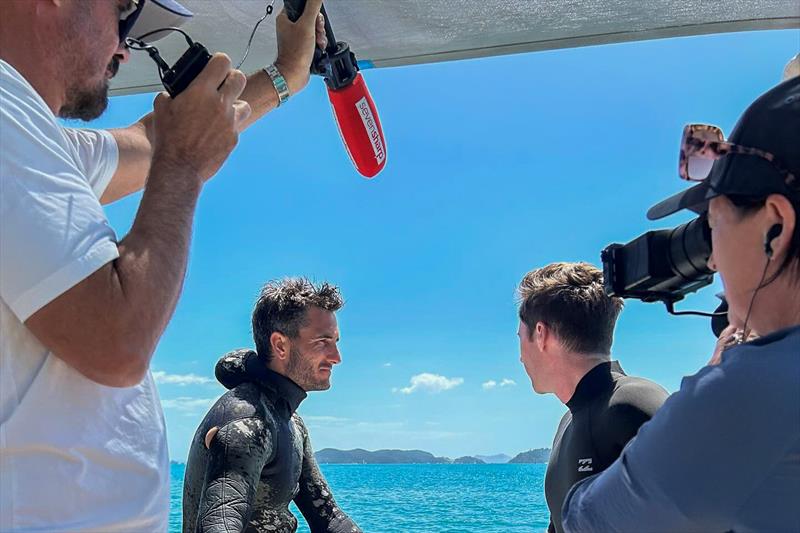
Live Ocean responds to Caulerpa invasion threatening Hauraki Gulf and Bay of Islands
by Live Ocean 12 Mar 2024 19:06 NZDT
12 March 2024

Live Ocean's Blair Tuke is interviewed after diving on his playground in the Bay of Islands and seeing the extent of the Caulerpa invasion © ONE News
Live Ocean Foundation is backing the development of an underwater ROV (Remote Operated Vehicle) pilot project to detect and monitor exotic Caulerpa, an invasive species of weed fast taking over the seabed in the Hauraki Gulf and Bay of Islands.
Caulerpa has been in New Zealand waters since 2021, and as Live Ocean's Blair Tuke found during a dive in the Bay of Islands, For TVNZ's prime time Sunday program, Caulerpa grows rapidly, suffocating all forms of life on, below and above the sea bed habitats. The Olympic Gold and Silver medalist and twice winner of America's Cup surfaced, visibly upset at what he had just seen in a once familiar seascape.
As well as damage below the surface, Caulerpa will potentially kill businesses and industries, including fishing and tourism, which ultimately rely on sea life in these regions.
While the NZ Government has initiated investigations into the threat, more is needed to determine its rate of expansion or how to gauge the success of containment and elimination strategies and options. Although some reports have already been produced, there is no obvious response to this cancer of the sea.
Unfortunately, the relatively shallow waters of the Hauraki Gulf and Bay of Islands provide an ideal environment for exotic Caulerpa.
Caulerpa meadows have been eliminated in two areas in California, and there are various options which must be tested and assessed for effectiveness and collateral environmental damage. The exotic weed is believed to have originated from fish tanks emptied into waterways leading to the sea. It is then transported on fishing gear and anchors. It will grow from small fragments of transported weed, which is now banned for aquarium use in some States in the US.
The ROV should provide accurate data on the seabed and the extent of Caulerpa infestation without divers. Developing and deploying an ROV is a vital first step to containment and elimination.
Blair Tuke speaks to TVNZ Sunday about exotic Caulerpa. Last night the exceptional investigative journalism team at TVNZ SUNDAY ran a feature story on the most significant marine biosecurity issue ever faced in Aotearoa New Zealand